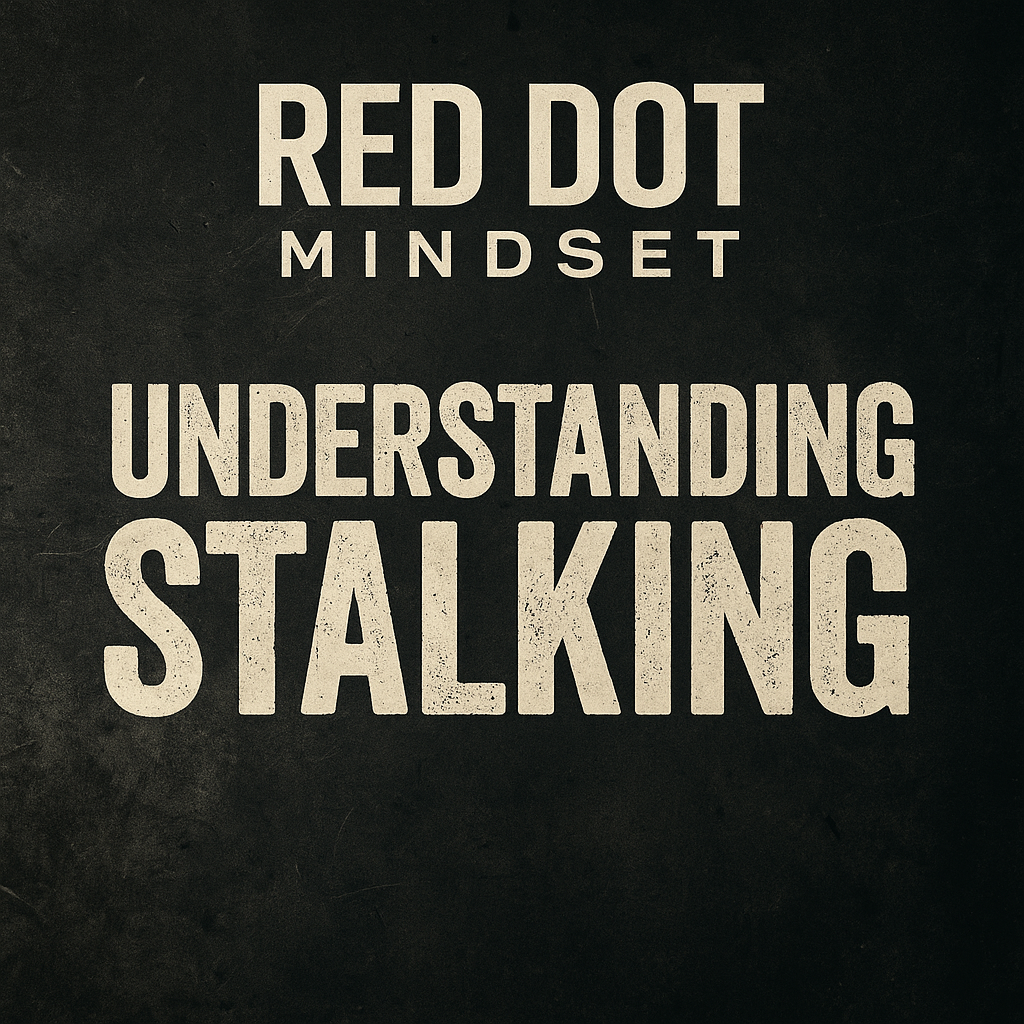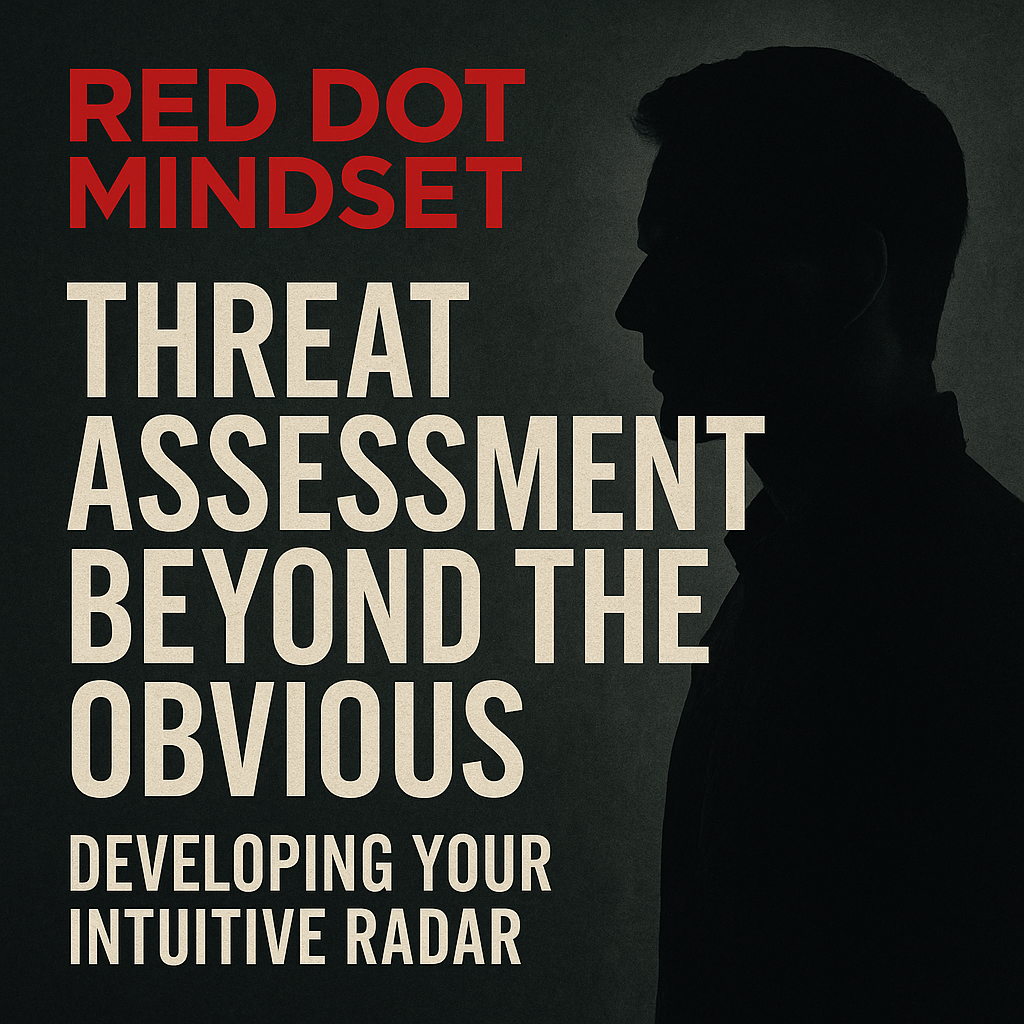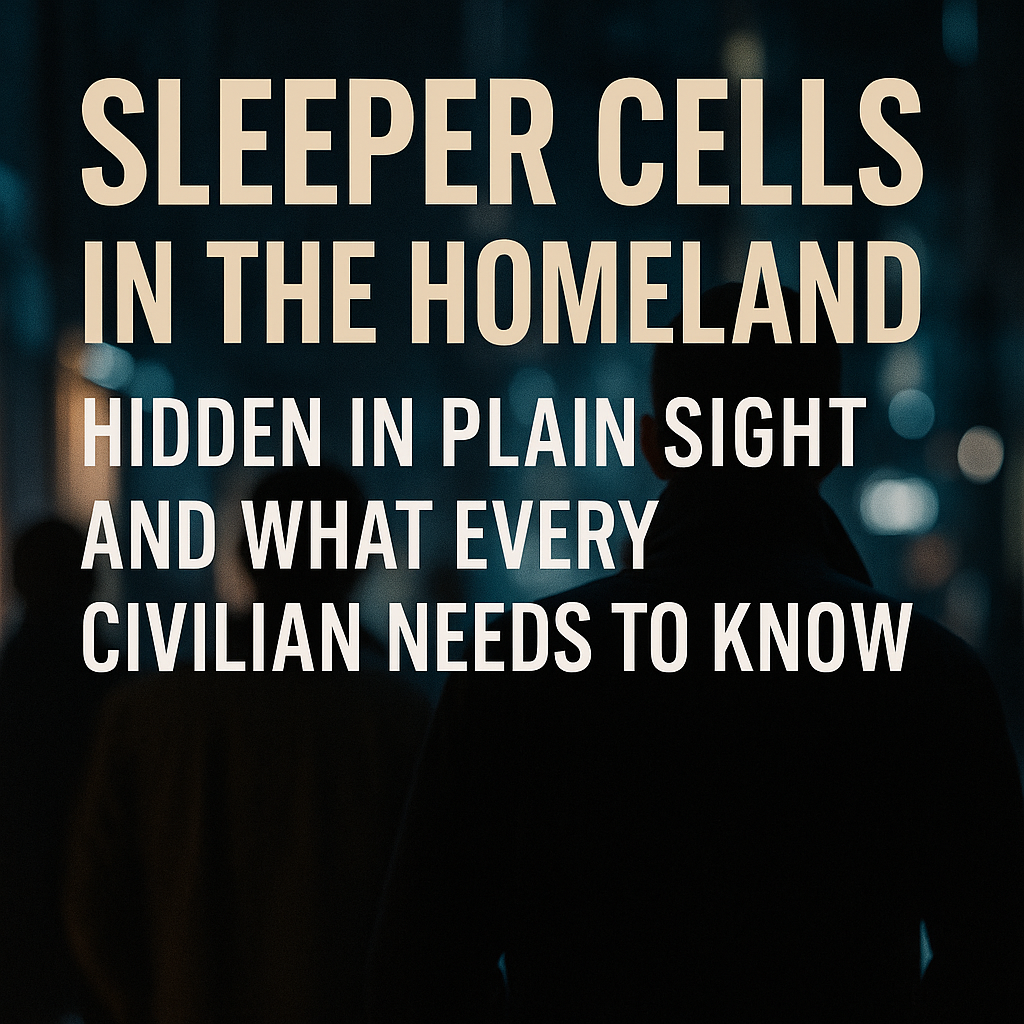Episode Transcript
[00:00:00] Speaker A: You ever think about how to, you know, go through your day feeling secure, genuinely secure, I mean, but without getting totally paranoid about everything?
[00:00:07] Speaker B: Hmm. It's a tough balance, right? Especially these days.
[00:00:10] Speaker A: Exactly. And that's precisely what we're diving into today. We're looking at this really powerful framework, something actionable for sharpening your awareness in modern life.
Now, it definitely builds on the groundwork laid by Lt. Col. Dave Grossman. His whole sheepdog analogy. Sheep, wolves, Sheepdogs. That really changed how people thought about violence, especially for, like, military and law enforcement.
[00:00:35] Speaker B: Oh, absolutely. Grossman's insights, they're timeless, really groundbreaking stuff. But, you know, the world for civilians today, it's just. Well, it's gotten a lot more complex. So it kind of demands a different approach, maybe an evolved one, for regular folks who want to be prepared, want to feel capable, but maybe don't see themselves as, you know, warriors in that traditional sense.
[00:00:55] Speaker A: And that's exactly where today's focus is. We're talking about the gray, the white, and the black. A tactical awareness framework for the modern civilian. And this isn't just some abstract idea. It's a practical system developed by Mickey Mitta, the founder of Gray Matter Ops.
[00:01:11] Speaker B: Right, And Gray Matter Ops, their whole mission. It's clear, it's powerful, and it guides what they do. Train the mind, win the fight.
[00:01:19] Speaker A: Okay. Train the mind, win the fight. Love that. So let's unpack this framework. When we talk situational awareness, where does Mickey Middaugh say most of us? Well, where do we start? What's that? Kind of default setting?
[00:01:31] Speaker B: Yeah. So Mickey defines that starting point as condition White. Basically, these are folks who are generally unaware, maybe unprepared, often just really distracted by, you know, their phone, their thoughts, whatever. It's that state before you consciously start paying attention. It lines up pretty closely with Grossman's original condition White concept, that sort of baseline state.
[00:01:52] Speaker A: Condition white. Okay, so what does that actually look like day to day? Can you maybe paint a picture for us, like a common scenario?
[00:01:57] Speaker B: Oh, definitely. Think about someone walking down a busy street, right? Earbuds in, deep in their phone, just completely oblivious to who's around them, who's coming up behind them, or, you know, you see it all the time in parking lots. Some staring at their screen, walking between cars, not noticing a car backing out or someone stepping out from behind a van. It could also be simpler things like sitting in a restaurant or a coffee shop with your back totally facing the door.
[00:02:21] Speaker A: Yeah.
[00:02:22] Speaker B: Not clocking who comes in, not even having a quick mental scan of where the nearest exit is, just in case.
We've all probably been there at some point, lost in the moment.
[00:02:31] Speaker A: That's. Yeah, that's incredibly relatable. And it sounds like being in conditional white isn't just like a minor risk. It feels like an open invitation, almost. What are the real dangers there?
[00:02:41] Speaker B: It really is an invitation, unfortunately, because the people operating in what we'll call condition black, the threats, they are actively looking for white level targets. Why?
Because being unaware makes you incredibly easy to surprise, easy to isolate from others, and frankly, simple to ambush. There's basically no resistance.
[00:03:00] Speaker A: Hmm. So they're attractive targets.
[00:03:02] Speaker B: Exactly. The path of least resistance.
[00:03:05] Speaker A: But it's important, right, to stress that gray matter ops isn't about blaming people for being in white. It's more about empowerment, Moving out of it.
[00:03:13] Speaker B: Absolutely. 100%. As Mickey Middaugh always emphasizes, the goal isn't paranoia. Nobody wants to live like that. It's about developing what he calls intentional perception, Making awareness, a conscious habit, Something you practice moving out of conditioned white. That's the first absolutely critical step to taking back control of your environment, enhancing your safety. It's about being present. Yeah. Not paranoid.
[00:03:37] Speaker A: Okay, that makes perfect sense for the unaware side. But you mentioned conditioned black, the threats. Who are these individuals? What defines condition Black in this framework?
[00:03:46] Speaker B: So condition Black, that refers to the threat actors, and it's a spectrum, really. It could be, you know, hardened criminals planning something specific, or it could just be everyday opportunists looking for an easy score. Their behavior, though, it aligns pretty closely with Grossman's wolf mentality. They're calculated. They can be predatory and often surprisingly patient. Patient.
[00:04:08] Speaker A: Okay, so what are their patterns then? What are they actually looking for? And how do they operate? Typically?
[00:04:14] Speaker B: Well, they're scanning constantly, looking for signs of distraction, signs of vulnerability, Someone who looks lost or unsure or just completely absorbed in something else. They often hang around what are called transitional spaces. Think about parking lots again, ATM areas, stairwells, hallways.
Places where people naturally let their guard down for a moment.
[00:04:34] Speaker A: Ah, those in between spots.
[00:04:36] Speaker B: Exactly. And they might test boundaries, maybe ask a slightly too personal question, or try to get you to comply with a small, seemingly harmless request Just to see how you react, gauge your confidence level.
But crucially, they're usually looking for soft targets they can exploit through timing and surprise. It's not always about physical strength or a big confrontation.
[00:04:57] Speaker A: So it sounds like it's less about overpowering someone physically and more about almost like psychological maneuvering. Finding that brief window of opportunity.
[00:05:05] Speaker B: That's a great Way to put it. Yeah. Mickey Midows insight here from Gray Matter Ops is crystal clear. Exploiters don't primarily rely on strength. They rely on surprise and timing. They watch, they wait for hesitation. For that moment you're distracted. And that's precisely why your awareness is. Well, it's your best armor. The key to dealing with a conditioned black threat isn't always about fighting back physically. Often it's about preemption, seeing it coming and acting before it gets to that point. Avoidance, escape. Those come first, right?
[00:05:34] Speaker A: Avoid escape, defend.
Okay, so we've got Condition White, the unaware target. Condition Black, the calculating exploiter. The vital question then is how do we get to that prepared state? How do we become. Well, the opposite of vulnerable. This must be where Condition Gray comes in. Sounds like the goal, the sweet spot for the modern civilian. What exactly is Condition Gray?
[00:05:54] Speaker B: Condition Gray. Yeah, that's the objective and really important to understand. It's not about trying to be a superhero or a Tier one operator. That's not the point. For most civilians, it represents a civilian who's operating in a state of, let's call it calibrated readiness. Think of it as the mindset of a trained observer. Someone who can blend in, look totally normal, but is actually seeing and processing everything happening around them. It's about being present, being prepared, but without that constant draining feeling of being on high alert.
[00:06:23] Speaker A: Calibrated readiness. I like that. But how do you maintain that? Doesn't it risk becoming exhausting always being on or slipping back into paranoia? What are the actual, like, practical things someone in Condition Gray does?
[00:06:34] Speaker B: Yeah, that's the million dollar question, isn't it? And conditioned gray is the answer because it's framed as a habit, not a constant state of tension. So someone in gray, when they walk into a place, a cafe, a store, whatever, they consciously pick a seat that gives them good visibility, maybe good access to an exit. They choose where they stand in line.
They're actively scanning, almost subconsciously after a while to get a feel for. For what's normal in that environment, the baseline. And because they know what's normal, they can quickly spot anomalies. Things that just seem off.
[00:07:05] Speaker A: Okay.
[00:07:06] Speaker B: They tend to watch people's hands, not just their eyes, because hands often show intent before anything else. They think in those layers we mentioned. Avoid. First, can I just leave? Escape second, if I can't avoid, how do I get out safely? And only then, if avoidance and escape fail, how do I defend myself or others?
And sure, they might legally carry defensive tools, but way more important than the tool Is the intent, the mental preparedness to act if necessary. They have a plan, even if it's a simple one.
[00:07:32] Speaker A: That layering, avoid, escape, defend, that seems really crucial. Can you give us a concrete example, Something relatable that really shows Condition Gray in action?
[00:07:42] Speaker B: Yeah, sure. Let's use the coffee shop example again. A woman walks in. Before she even gets in line, she does a quick scan, okay? Exits there and there. She gets a feel for the vibe. It's it, calm, rushed. Is anyone unusually loud or tense? Maybe she notices someone kind of lingering near the restrooms without ordering. Or perhaps someone enters who just looks very out of place. Maybe dressed inappropriately for the weather, agitated. So she chooses her spot carefully. Maybe a seat against a wall. Not trapped in a corner where she can see the entrance and has a clear path to an exit. She's not sitting there sweating, looking over her shoulder constantly. She looks perfectly normal. But she's aware. She's processed the environment, noted potential issues, and has already subconscious started thinking, if that person approaches me, I'll do X. If I need to leave quickly, I'll go that way.
[00:08:28] Speaker A: She's not paranoid, not at all.
[00:08:30] Speaker B: She's simply prepared. She's operating in condition Gray. And that really captures the Gray Matter Ops philosophy. Condition Gray is fundamentally about mastering yourself, your own awareness. It's trainable, you can practice it, it's repeatable. And honestly, in today's world, it feels pretty necessary.
[00:08:46] Speaker A: Okay, this framework makes a lot of intuitive sense, but it does bring up a question. Why was this evolution needed? Grossman's sheepdog model is so well known. Why did Mickey Mitta and Grey Matter Ops feel the need to develop this gray, white, black structure specifically for civilians?
[00:09:03] Speaker B: That's a really insightful question. It gets right to the core of why Gray Matter ops exists. Really. Lt. Col. Grossman, he gave us this incredibly powerful ethical framework, right? The moral duty, the protector, the sheepdog. It resonated deeply, especially in military and law enforcement circles.
But the civilian world today, what you've got the issue of soft targets everywhere. You have complex legal considerations after any self defense incident. You've got digital surveillance changing things. It just means that awareness isn't just a good idea anymore. It's a critical practical skill for everyday survival and safety.
[00:09:37] Speaker A: So the context is different.
[00:09:39] Speaker B: Exactly. The context has unique challenges. So Gray Matter Ops developed the gray, the white and the black specifically to meet the those modern civilian needs. It gives people a model that's grounded in actual behavior, in how we perceive things, how our brains work. That makes it easier for Anyone to learn and apply. Parents, students, people who travel, professionals, you name it. It also cleverly avoids those identity labels. You don't have to be a sheepdog to use this framework. Anyone can learn to operate in condition Gray. It reduces confusion and maybe most importantly, it provides real time, actionable awareness training. You can actually use walking down the street, going to the mall, living your life. It's not replacing Grossman's model. Maybe think of it as evolving its core principle for a broader audience. You are ultimately responsible for your own readiness.
[00:10:28] Speaker A: Okay, so for listeners who are hearing this and thinking, right, I want to learn more, I want to apply this. How does Gray Matter ops actually integrate this framework? Where would people encounter it in their training or content?
[00:10:38] Speaker B: Oh, it's woven through everything they do. It's fundamental. You'll hear it discussed constantly on the Red Dot mindset podcast. For instance, they break down real incidents, self defense encounters, and analyze them using the gray white black framework. It really brings it to life. It's also central to their articles, their blog posts, their tactical briefings they might put out, and of course, in any hands on training or scenario drills they run. It even connects to their other mindset models, things like the P3XR system or the awareness continuum. It's really a foundational piece. There's a quote from Mickey Middaugh that always sticks with me. Awareness is not a switch, it's a state.
And once you learn to live in gray, you'll never go back. It really captures that shift in perspective.
[00:11:20] Speaker A: Once you learn to live in gray, you'll never go back.
[00:11:24] Speaker B: Wow, that's powerful. Okay, so wrapping this up, what's the big takeaway for you, the listener, as you go about your day after hearing this, I think the core message is empowerment.
You personally are responsible for your own readiness and this framework, the gray, the white and the black, and gives you a clear, understandable and actionable way to achieve that calibrated readiness. It lets you be more aware, more prepared, more capable, without needing to adopt a whole new warrior Persona. It's about being effective and confident right where you are in your everyday life makes sense.
[00:11:57] Speaker A: So here's something to maybe chew on as you go.
How could changing just one small habit may be putting the phone away when you walk through a parking lot or consciously choosing where you sit in a cafe. Just one small shift from condition white towards condition gray.
How could that fundamentally change how safe you feel, how in control you feel, how much more present you might be? And if you want to explore this further, get more of those real world breakdowns and practical insights for civilian defense. Definitely check out the Red Dot Mindset podcast. You can find it easily online at.
[00:12:27] Speaker B: Red Dot Mindset Train the mind, Win the fight. Stay gray, Stay ready.




